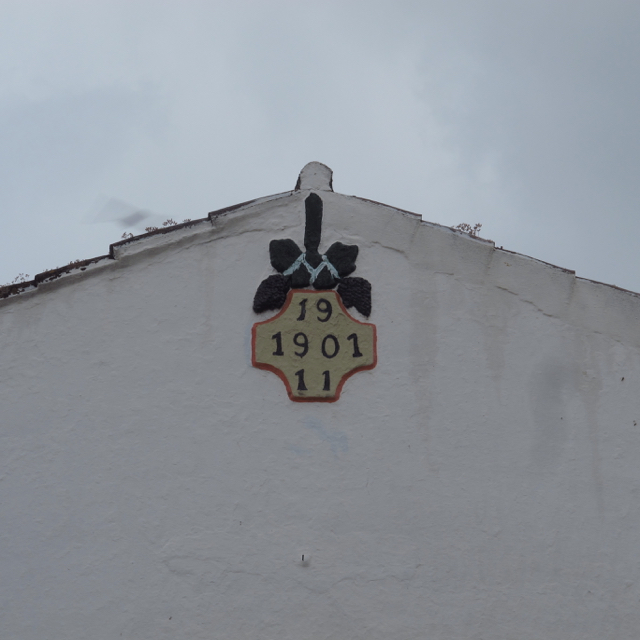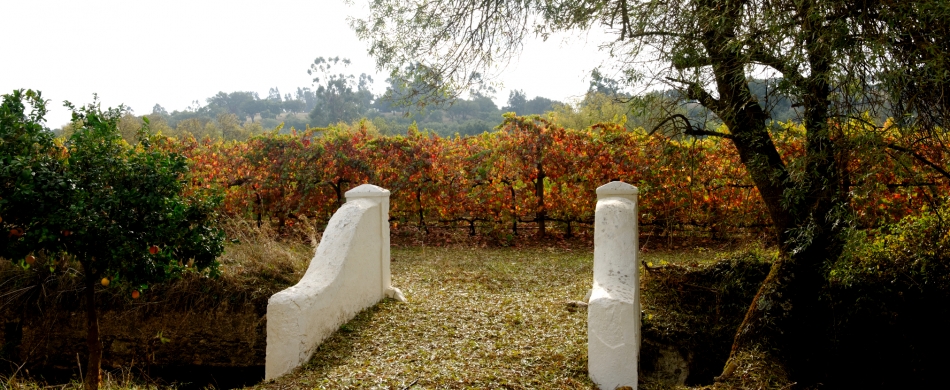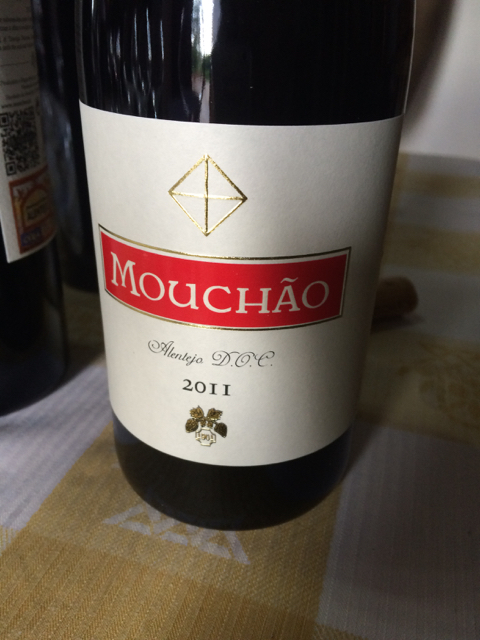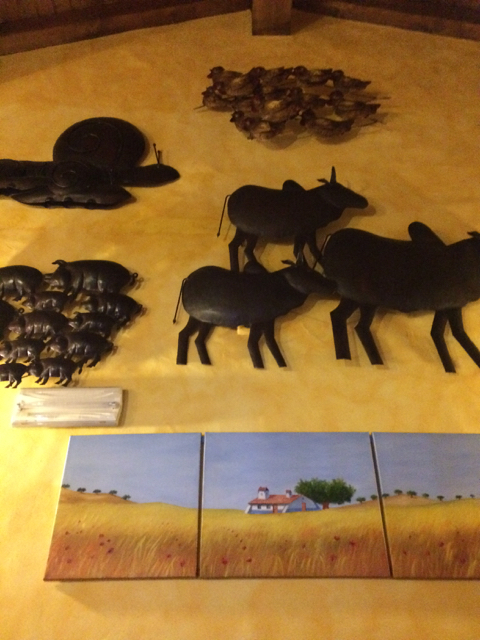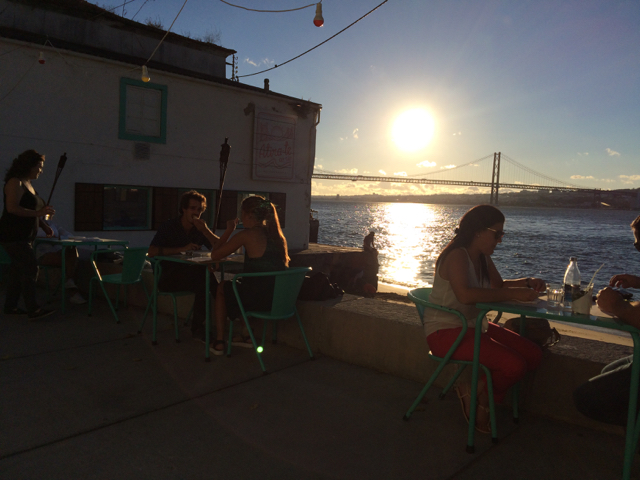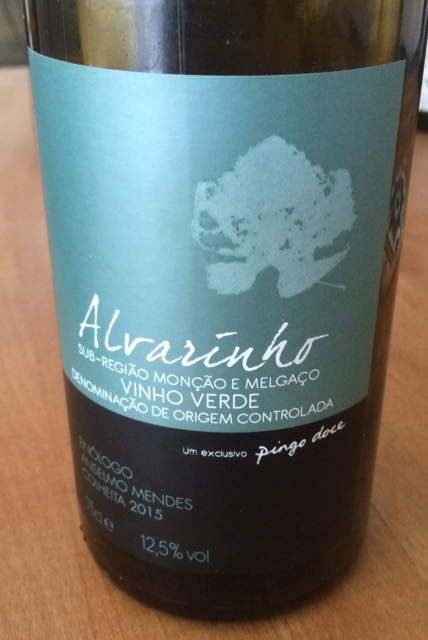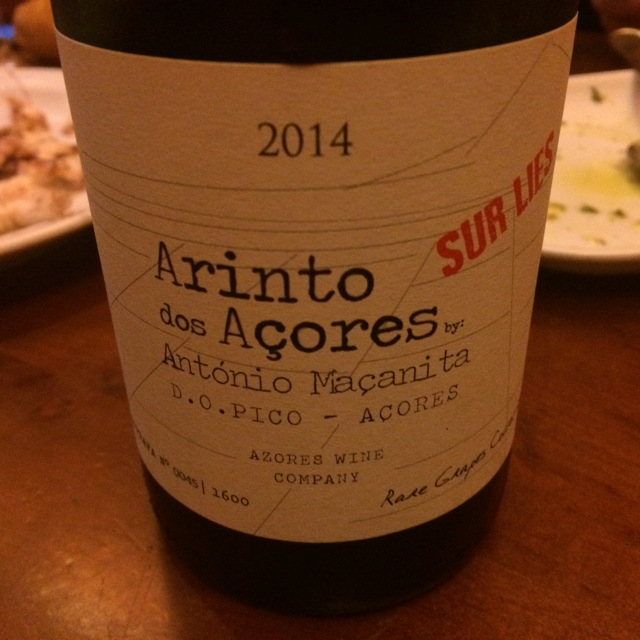 Scenes from the winery
Scenes from the winery
(This post was originally published on Les 5 du Vin on 12th July 2016)
Last Thursday (7th July 2016) we headed out from Lisbon to the Alentejo for a day visit to the fabled Mouchão estate. Normally the Alentejo in summer is hot and dry. Instead on Thursday we were met with heavy rain lit up by impressive flashes of lightning. We were shown round by David Marques Ferreira, who has been estate manager for the past three years. CRM and I had met David at last December's Adegga Wine Market in Lisbon.
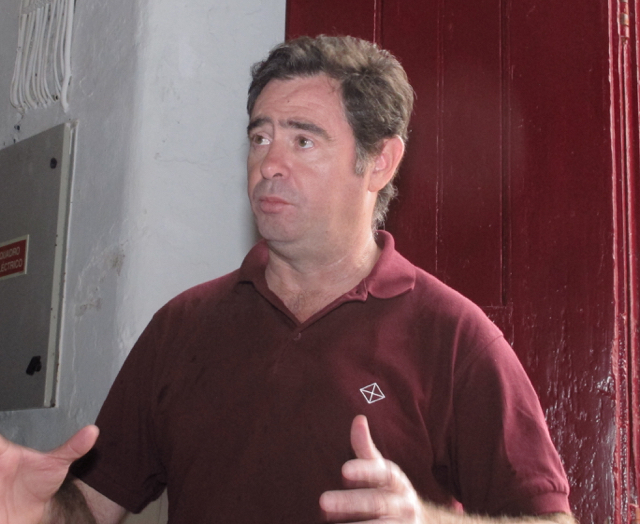 David Marques Ferreira
David Marques Ferreira
Established in the 19th century Mouchão is the oldest estate in the Alentejo – the other side of the River Tejo. The 1000 hectare estate is owned by the Reynolds family, who in the 19th century, were the leading producers of cork. At the end of the 19th century they decided to diversify into wine and in 1890 planted their vines – they have 38 hectares with no intention to increase the area under vine. They chose to major on Alicante Bouschet, a teinturier variety, which remains Mouchão's signature grape variety. David Ferreira –Alicante Bouschet is "our body and soul". The winery was built in 1901.
"Alicante Bouschet gives us more than just colour," David Ferreira explained. "We get big tannins and freshness. Our vines are at 200 metres altitude, which is high for the Alentejo. Some of our vines are at 300 to 400 metres, so we get freshness and acidity. This helps our wines to age well – the 1954 is still good".
"Although we have a variable geology, sand and clay is the basis, so we retain moisture during the hot summers," Ferreira continued. "The estate is between two rivers – hence the name Mouchão. We are very much in the middle of nowhere".
"We work very traditionally here – limiting production, hand picking, no destemming, wholebunch fermentation, foot treading in lagars and a manual press etc.We mainly use old vats of 5000 litres and prefer French oak with malo in barrel but also use some Brazilian wood. "
 A barrel from the time when the estate was confiscated
and run by the local cooperative
A barrel from the time when the estate was confiscated
and run by the local cooperative
The estate remains in the Reynolds family, which is now into the seventh generation. However, there was a ten-year interruption of ownership following the 1974 Revolution. The estate was confiscated and the wines were made by the local cooperative and sold under the co-op's name. It was returned to family ownership in 1985.
"The vineyards were in a poor state," explained Ferreira. "Nothing had been planted and existing vines had not been maintained. We nearly lost our Alicante Bouschet!"
We tasted five wines:
2015 Dom Rafael Branco – blend of Antão Vaz and Arinto 7.69€
Still very youthful and tight in the finish but with attractive pineapple and grapefruit notes. Good value.
2013 Dom Rafael Tinto – blend of Alicante Bouschet, Trincadeira and Aragonez 8.99€
This spends one year in a mix of large vats and small barrels and then a further year in bottle. As Mouchão's entry level red, I think this elegant wine is stunning value! It has lovely velvety texture, herbal and spicy notes, structure and acidity. Really a steal at 8.99€ and will clearly age well over the next few years.
2012 Ponte de Canas – Alicante Bouschet (40%), Touriga Nacional,Touriga Franca, Syrah 16€
Unlike the other Mouchão wines this has a small percentage of Syrah that gives this wine additional freshness and edge. The 2012 already has attractive texture and powerful fruit but ideally it needs several more years in bottle to show its best.
Over lunch we had an interesting discussion with David over Ponte de Canas as he indicated that the current name used on the label may not make it sufficiently clear that Ponte de Canas was actually a wine from Mouchã0.
We suggested that Mouchão ought to be part of the Ponte Canas name and suggested Ponte Canas de Mouchão or Ponte de Mouchão citing that. for instance, Château Latour uses Les Forts de Latour. Clearly the name is under discussion, so we may see a change in the future.
2011 Mouchão – 85% Alicante Bouschet, 15% Trincadeira 35€
We were privileged to be the first to taste the 2011 grand vin, which will be released soon. Naturally this deep coloured wine is still very young and tight in the finish but it has a lovely warm spicy aromas and an opulent texture.
2011 Vinho Licoroso – 100% Alicante Bouschet 19€
This is Mouchão's version of Port – made in the same way using grape spirit distilled at the winery to stop the fermentation and fortify the wine. Very concentrated with long rich cherry and prune fruit.
 The still
The still
•••
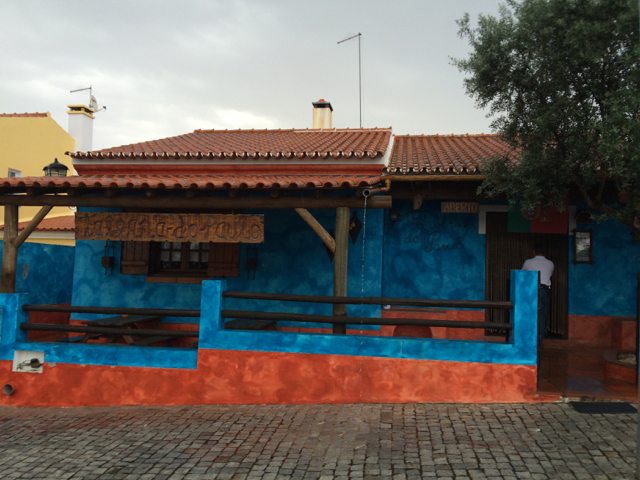 A Taberna do Paulo
A Taberna do Paulo
Rua 1 de Maio, 28 | Santo Antonio de Alcorrego
After the tasting we all drove to nearby small town of Santo Antonio de Alcorrego to the brightly decorated A Taberna do Paulo where we had a very enjoyable lunch featuring three different types of migas – plain, with tomato, and with coriander – accompanied by small lamb chops.
Our visit to Mouchão reminded me of Tondonia in Haro (Rioja). It has the same sense of calm and great respect for tradition.
Ferreira summed up – "We say Mouchão is Mouchão!"
An update: 29th July 2016
Following our visit we found a bottle of 2007 Ponte de Canas Mouchão in a local restaurant on the edge of Campo d'Ourique for 29€. The staff had a little trouble finding it but it proved to be worth the hunt as it was delicious – good concentration, spice and with good acidity to balance. Ready to drink now but clearly has a number of years ahead.
Jim Budd






























